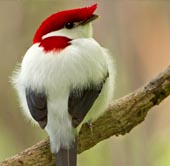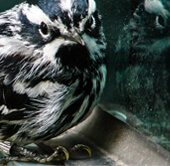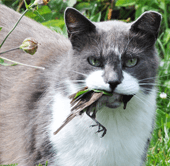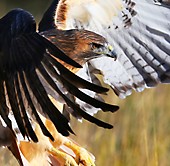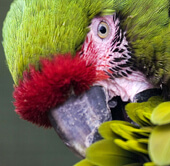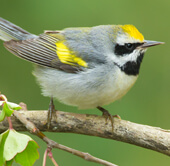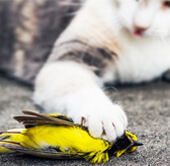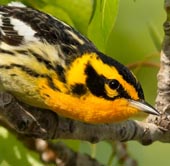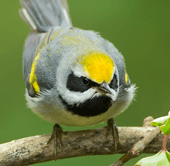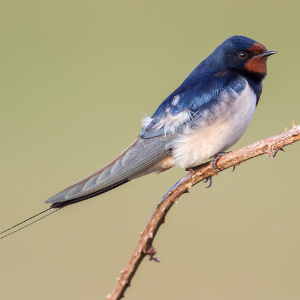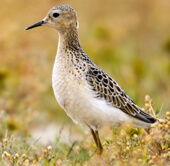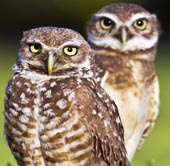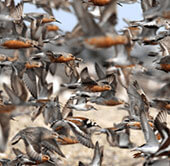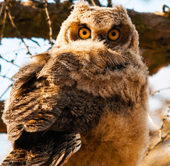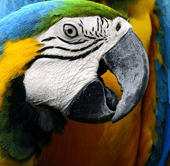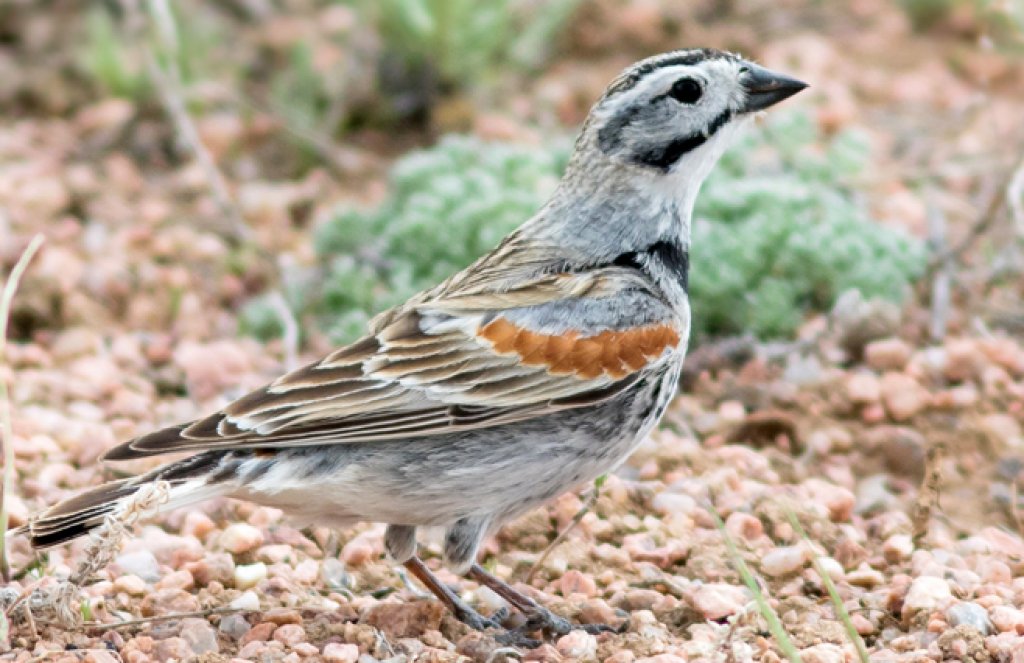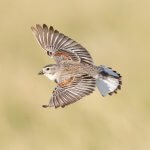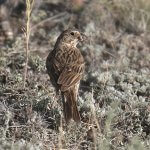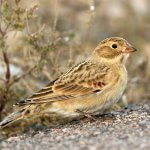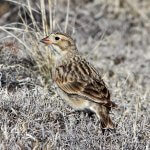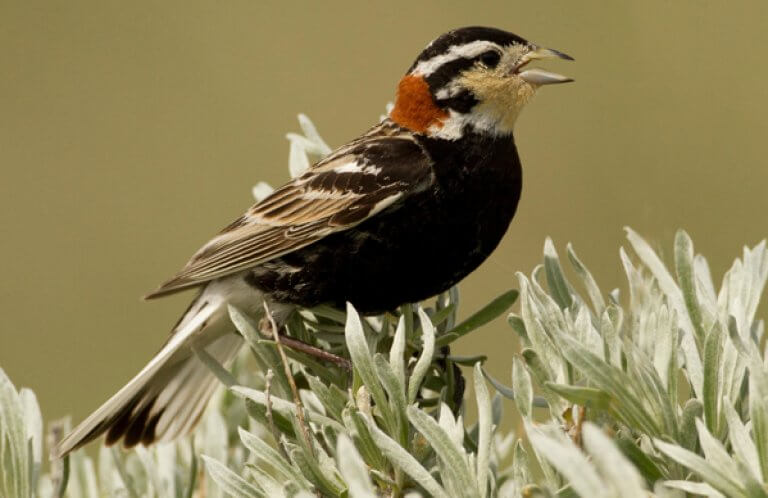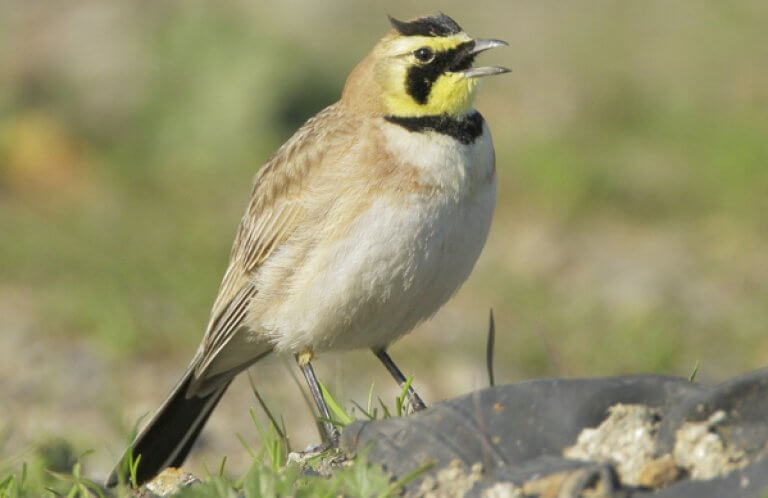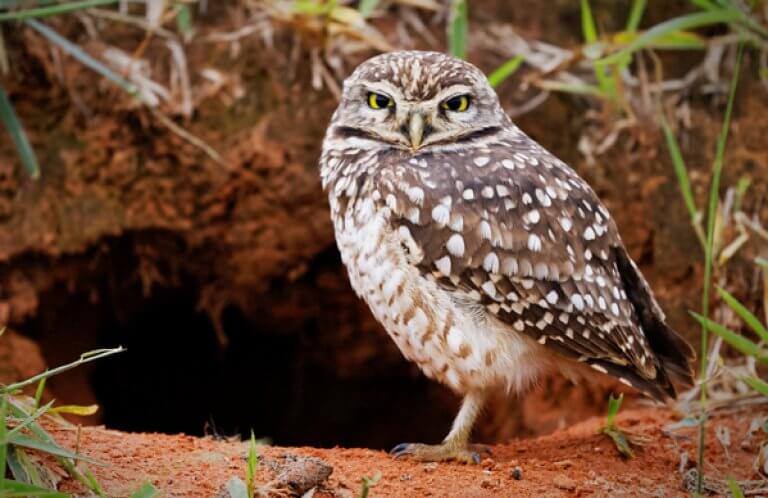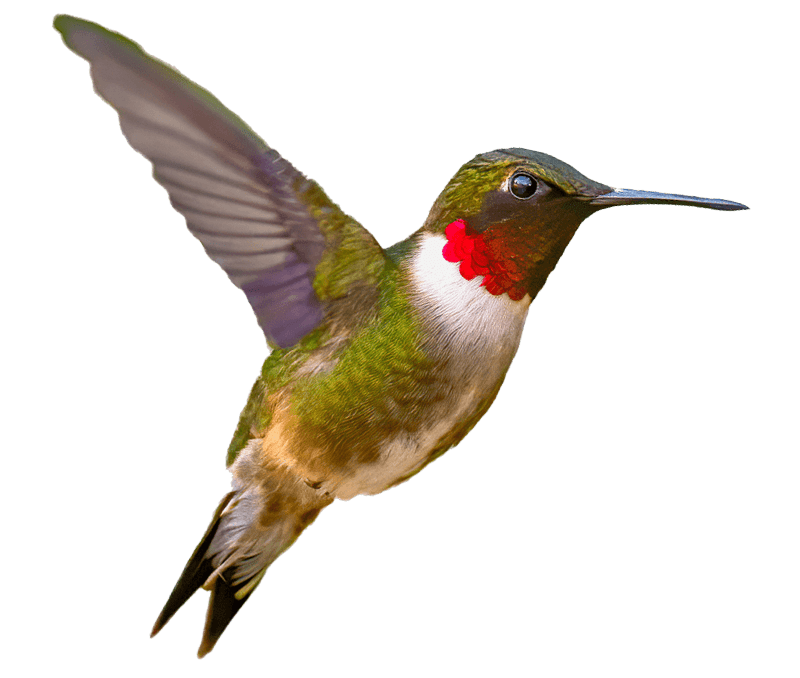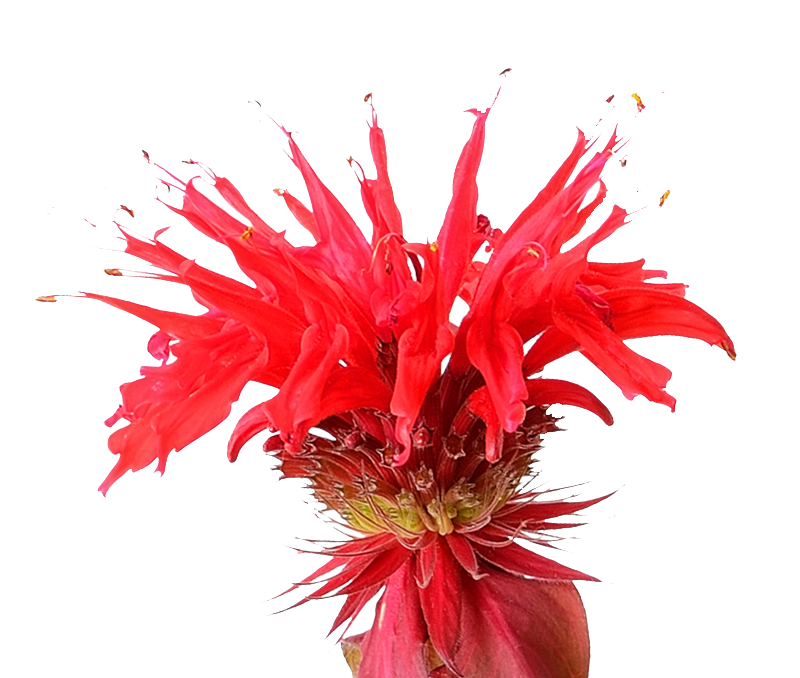About the Thick-billed Longspur
One of the first scientific descriptions of the Thick-billed Longspur, made in 1851 by amateur ornithologist George Newbold Lawrence, named this bird the “rufous-winged lark bunting.” Its current moniker is a literal translation of the bird's genus name Rhynchophanes (Thick-billed), while the word “longspur” refers to its elongated hind claws, or halluces. Many other ground-dwelling species, such as the Western Meadowlark, also have long hind toes, an adaptation that probably helps these birds walk over uneven terrain.
The Thick-billed is the only longspur species placed in its own genus, after the most recent genetic studies found it to be more closely related to the Snow Bunting than to other longspurs.
During nesting season, the male Thick-billed Longspur's gray, black, and chestnut breeding plumage stands out. During the rest of the year, both genders resemble sparrows, their somber plumage an unassuming mix of streaky gray and brown feathers.
But one standout feature makes Thick-billed Longspur identification a snap in any month.
A Telltale Tail
In flight, the Thick-billed Longspur's eye-catching tail pattern clinches its identification. At all times of the year, flying birds flash a mostly white tail divided by a distinctive black "T" formed by dark central feathers intersecting a black tip. This bold pattern differs from those of Lapland, Smith's, and Chestnut-collared Longspurs (though this last species shows a good amount of white on the tail, but with a triangular black patch instead of a "T").
Songs and Sounds
During the breeding season, the male Thick-billed Longspur sings a rather low-pitched, tinkling song, often given from an elevated perch.
Listen here:
Song during an aerial display:
Breeding and Feeding
A Dashing Display
Like the Lark Bunting and Sprague's Pipit, the male Thick-billed Longspur undertakes dramatic aerial displays in his effort to claim territory and attract a mate. With fluttering wings, he rises 20 to 30 feet above his prospective territory. Then, descending slowly, the bird extends his wings and spreads his tail to show off the bright white undersides and striking pattern, while singing his jingling song.
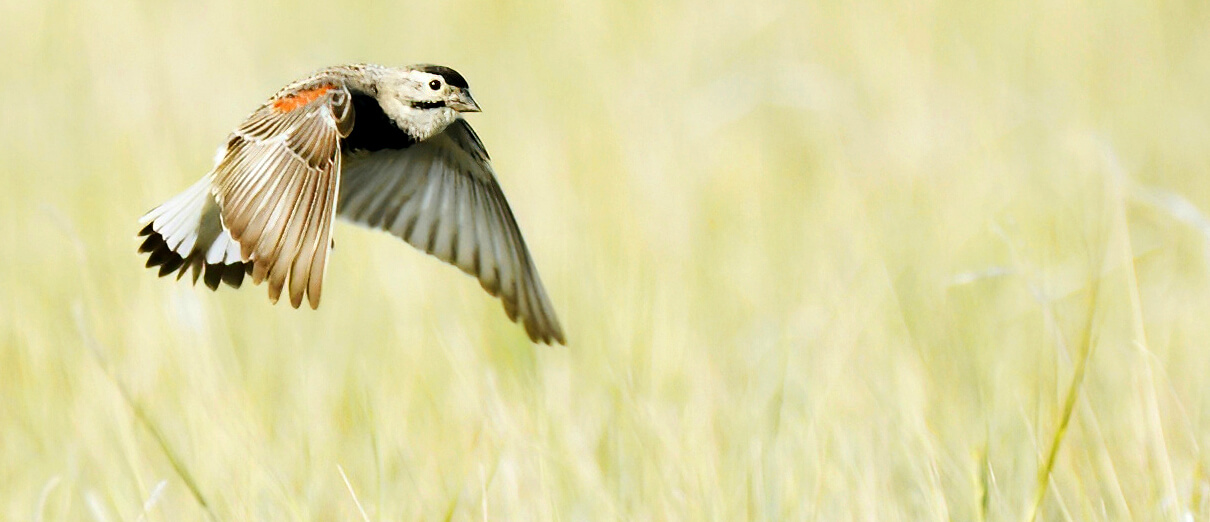
Male birds often repeat this display over the course of the breeding season as a part of territorial defense. Once a pair is formed, the female longspur builds an open-cup nest of grasses in a shallow depression on the ground. There, she alone incubates a clutch of two to four whitish, dark-speckled eggs for around 12 days. Once hatched, nestlings are fed by both parents. They leave the nest after about ten days.
Outside of breeding season, the Thick-billed Longspur is gregarious, foraging and migrating in large flocks, as do Bobolinks and Dickcissels.
Stalking and Hawking
The Thick-billed Longspur forages by walking or running along the ground (stalking), while it picks up seeds and insects. It may also jump into the air (hawking) in pursuit of larger winged insects such as grasshoppers. In the winter, it switches to a diet of seeds and waste grains, sometimes adding small berries to the menu.
Region and Range

The Thick-billed Longspur breeds in the Northern Great Plains, in an increasingly patchy range spanning from southern Alberta and Saskatchewan in Canada, south to eastern Colorado. This species primarily winters in the western two-thirds of Texas and in Mexico's Chihuahuan Desert. It prefers drier grasslands than do other longspurs, particularly those with patches of open ground. The Horned Lark and Burrowing Owl favor similar habitats and often associate with these longspurs, particularly on their wintering grounds.
Conservation
Saving the Thick-billed Longspur — and a Suite of Other Species
The Thick-billed Longspur has lost four percent of its population per year over the last 50 years, resulting in a cumulative loss of 88 percent, according to the North American Breeding Bird Survey. This steep decline is largely due to the loss of native shortgrass prairie, and widespread pesticide use.
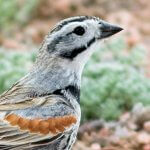
Help support ABC's conservation mission!
ABC's collaboration with ranchers to enhance habitats on working lands — for example, through rotational grazing — benefits the Thick-billed Longspur, Long-billed Curlew, and other grassland species on their breeding grounds. Efforts with ranchers on birds' wintering grounds are also essential: For example, working with our partner Pronatura Noreste, ranchers in Mexico adopted rotational grazing — strategically moving cattle from pasture to pasture, mimicking the grazing patterns that occurred when bison formerly roamed the Chihuahuan Desert. Such cyclical grazing helps maintain optimal habitat conditions, benefiting the longspur and many other migratory birds, including the Baird's Sparrow and Mountain Plover, as well as resident wildlife including the Worthen's Sparrow — an Endangered species found only in Chihuahuan Desert grasslands.
ABC is also advocating for grassland birds such as the Thick-billed Longspur through the 2023 Farm Bill; ABC's "Bird Saver" platform would help the Farm Bill channel funds designated for conservation to the programs that would make the biggest difference for grasslands and their associated bird species.
Get Involved
Policies enacted by the U.S. Congress and federal agencies, such as the U.S. Fish and Wildlife Service, have a huge impact on migratory birds. You can help shape these rules for the better by telling lawmakers to prioritize birds, bird habitat, and bird-friendly measures. To get started, visit ABC's Action Center.
Living a bird-friendly life can have an immediate impact on migratory birds in the United States. Doing so can be as easy as adding native plants to your garden, avoiding pesticides, and keeping cats indoors. To learn more, visit our Bird-Friendly Life page.
American Bird Conservancy and our Migratory Bird Joint Venture partners have improved conservation management on more than 8.5 million acres of U.S. bird habitat — an area larger than the state of Maryland — over the last ten years. That's not all: With the help of international partners, we've established a network of more than 100 areas of priority bird habitat across the Americas, helping to ensure that birds' needs are met during all stages of their lifecycles. These are monumental undertakings, requiring the support of many, and you can help by making a gift today.

